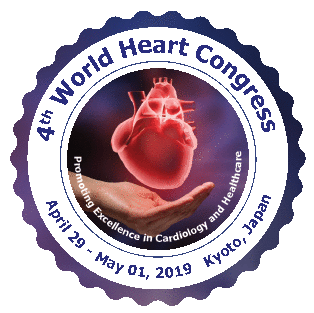Jorge Polonia
University of Porto, Portugal
Title: Sequential follow-up evaluation of morning surge and pulse wave velocity in white-coat hypertensive patients with normal nighttime blood pressure
Biography
Biography: Jorge Polonia
Abstract
Background: White Coat Hypertensive subjects (WCH) are usually classified on the basis of normal daytime ambulatory or home Blood Pressures (BP). Since night time BP is the most powerful predictor of risk, we evaluate the long term value of morning surge, pulse wave velocity and micro albuminuria in WCH with normal daytime and normal night time BP values in comparison with control Normotensives (NT).
Method: For a median of 90 months, we prospectively evaluated the evolution of morning BP systolic surge, pulse wave velocity and micro albuminuria in Normotensive subjects (NT, n=101, 60% female; ageing 50±11 years) (clinic BP<140/90, awake BP<135/85 and nighttime <120/70 mmHg) and in 254 untreated subjects (45±14 years, 62% female) with WCH (clinic BP>140/90, ABP<130/85 mmHg) with no other major cardiovascular risk factors and in 97 sustained hypertensive subjects (HT: age 54±7 years, 58% female) .
Result: Evaluation was done baseline and between 37-150 months during follow-up: 65±19 months in NT, 70±29 months in WCH and 60±17 in HT. Cardio Vascular (CV) event rates per 100 patients-years were 0.61 in WCH, 0.66 in NT and 2.2 in HT groups. Morning SBP surge was at baseline higher in WCT 25±10 vs. in NT 22±10 mmHg (p<0.05), and in HT 34±12 mmHg,
p<0.01 vs. NT and WCH). These values did not change much at the end of follow-up with exception of that in NT 26±12 mmHg no longer different from WCH i.e 26±13 mmHg. The percentage of non-dippers was 37.4% in NT, 36.5% in WCH and 38.3 in HT. Pulse Wave Velocity (PWV) as a measurement of aortic stiffness was greater (p<0.03) in HT, PWV 10.9±4.6 m/s than in WCH, PWV 9.6±2.4 m/s and NT PWV 9.6±2.3 m/s. At the end of follow-up PWV values went up slightly but the relation between groups were maintained: PWV in HT 11.4±4.9 m/s, in WCH, PWV 9.7±2.8 m/s and NT 9.7±2.7 m/s.
Conclusion: After 89 months of follow-up, both the morning surge and PWV in WCH with normal night time BP values were similar to that of NT subjects but clearly inferior to the HT. That may suggest WCH with normal night time BP has a relative benign prognosis and night time BP should be included in the WCHT definition and in its prognostic stratification

